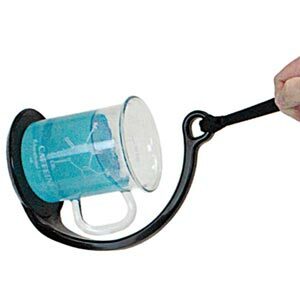April 28, 2015

Electrical phenomena have been studied since antiquity, but we’re still finding out new facts. Electricity is in the air—and in the news! This selection of noteworthy articles is bound to “spark” some ideas for classroom discussion. Read the rest of this entry »
 Leave a Comment » |
Leave a Comment » |  College level, electricity, Elementary level, energy, High School level, Middle School level | Tagged: Educational Innovations, electricity, energy, homeschool, parent friendly, PBL, phenomenon based learning, phenomenon-based science, science |
College level, electricity, Elementary level, energy, High School level, Middle School level | Tagged: Educational Innovations, electricity, energy, homeschool, parent friendly, PBL, phenomenon based learning, phenomenon-based science, science |  Permalink
Permalink
 Posted by Donna Giachetti
Posted by Donna Giachetti
April 28, 2015
 We have assembled a brilliant array of electricity products to help you explain the fundamentals of electricity to your students. We’ve got everything from Electric Paint to Plasma Globes.
We have assembled a brilliant array of electricity products to help you explain the fundamentals of electricity to your students. We’ve got everything from Electric Paint to Plasma Globes.
Here’s what some of our customers are saying about our some of their favorite EI electricity teaching tools.
If you have a favorite Educational Innovations product, let us know! We’d love to share your review with your fellow teachers and science lovers.
Read the rest of this entry »
 Leave a Comment » |
Leave a Comment » |  College level, electricity, Elementary level, energy, High School level, Middle School level | Tagged: customer, discrepant event, electricity, energy, experiments, fun experiments, hands-on activity, homeschool, parent friendly, PBL, phenomenon based learning, phenomenon-based science, reviews, science, variables |
College level, electricity, Elementary level, energy, High School level, Middle School level | Tagged: customer, discrepant event, electricity, energy, experiments, fun experiments, hands-on activity, homeschool, parent friendly, PBL, phenomenon based learning, phenomenon-based science, reviews, science, variables |  Permalink
Permalink
 Posted by Donna Giachetti
Posted by Donna Giachetti
April 8, 2015
 By: Donna Giachetti
By: Donna Giachetti
A Lesson on Electricity… with Elmo
Even babies understand the difference between ON and OFF. After mastering peek-a-boo, turning a switch on and off is one of a toddler’s favorite games. What will happen if I press here? Where did that light come from? Who made that noise? Something nearly always happens when a button is pushed, and it leaves children wanting to know more. At least that’s how it went in my house. My son wasn’t satisfied squeezing Tickle Me Elmo’s belly to hear the little guy giggle. He soon figured out how to switch Elmo on-off-on-off so rapidly that the poor fuzzball appeared to have a bad case of the hiccups.
Read the rest of this entry »
 Leave a Comment » |
Leave a Comment » |  College level, electricity, Elementary level, energy, experiments, High School level, Middle School level | Tagged: Educational Innovations, electricity, experiments, hands-on activity, homeschool, parent friendly, PBL, phenomenon based learning, phenomenon-based science, science, variables |
College level, electricity, Elementary level, energy, experiments, High School level, Middle School level | Tagged: Educational Innovations, electricity, experiments, hands-on activity, homeschool, parent friendly, PBL, phenomenon based learning, phenomenon-based science, science, variables |  Permalink
Permalink
 Posted by Donna Giachetti
Posted by Donna Giachetti
March 18, 2015
 by: Ken Byrne
by: Ken Byrne
How many people have been struck by meteorites falling from the sky? The fact of the matter is that we all have been…repeatedly! While injuries from fallen meteorites of significant size are extremely rare, falling all around us and onto us each day are the meteorites smallest siblings, micrometeorites. Read the rest of this entry »
 1 Comment |
1 Comment |  College level, Earth Science, Elementary level, High School level, Middle School level | Tagged: homeschool, meteorites, micrometeorites, parent friendly, PBL, phenomenon based learning, phenomenon-based science, science |
College level, Earth Science, Elementary level, High School level, Middle School level | Tagged: homeschool, meteorites, micrometeorites, parent friendly, PBL, phenomenon based learning, phenomenon-based science, science |  Permalink
Permalink
 Posted by Tami O'Connor
Posted by Tami O'Connor
February 9, 2015
 by: Evan Jones
by: Evan Jones
How the SpillNot works:
When you hold a cup of juice while walking, the juice tends to spill because the cup accelerates forward (ax, FIG.1, green arrow) and backward (-ax) with each step. The juice tips in response to that acceleration, and may spill over the rim of the cup.
 The Spill Not automatically tips the cup so that its top stays parallel to the juice surface (FIG.2). For example, if the juice surface tips to 30 deg, but the cup stays horizontal, the juice could spill. But if the cup also tips to 30 deg, we get no spill! Note that there are only 2 forces on each portion m of juice…the weight mg down, and the buoyancy force Fb of the juice pushing at a right angle to the surface. These two forces result in a horizontal accelerating force ma (in red). We see from FIG.1 that
The Spill Not automatically tips the cup so that its top stays parallel to the juice surface (FIG.2). For example, if the juice surface tips to 30 deg, but the cup stays horizontal, the juice could spill. But if the cup also tips to 30 deg, we get no spill! Note that there are only 2 forces on each portion m of juice…the weight mg down, and the buoyancy force Fb of the juice pushing at a right angle to the surface. These two forces result in a horizontal accelerating force ma (in red). We see from FIG.1 that
Read the rest of this entry »
 2 Comments |
2 Comments |  College level, experiments, High School level, Physics | Tagged: acceleration, centripetal force, hands-on activity, homeschool, parent friendly, PBL, pendulum, phenomenon based learning, phenomenon-based science, Physics, science, Spill not |
College level, experiments, High School level, Physics | Tagged: acceleration, centripetal force, hands-on activity, homeschool, parent friendly, PBL, pendulum, phenomenon based learning, phenomenon-based science, Physics, science, Spill not |  Permalink
Permalink
 Posted by Tami O'Connor
Posted by Tami O'Connor




 Posted by Donna Giachetti
Posted by Donna Giachetti  We have assembled a
We have assembled a  By: Donna Giachetti
By: Donna Giachetti by: Ken Byrne
by: Ken Byrne by: Evan Jones
by: Evan Jones